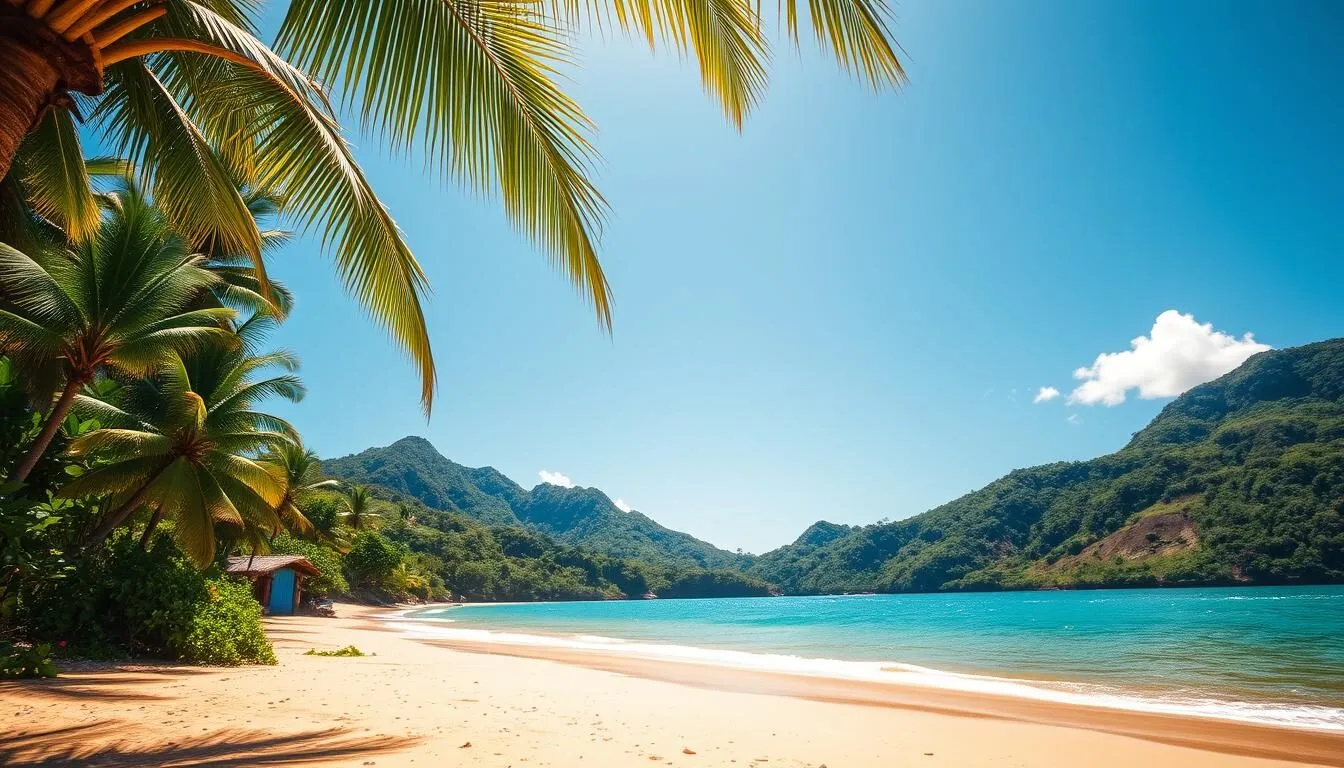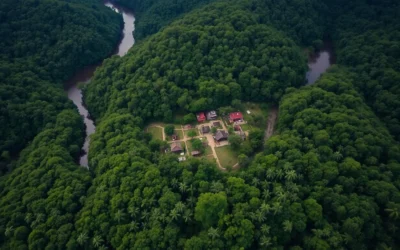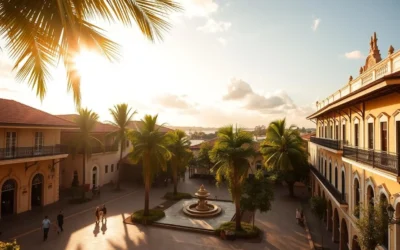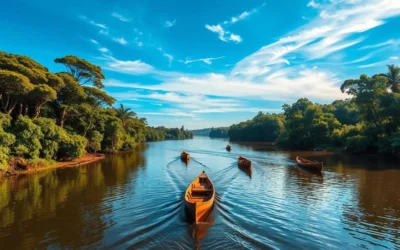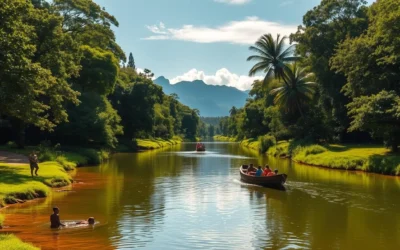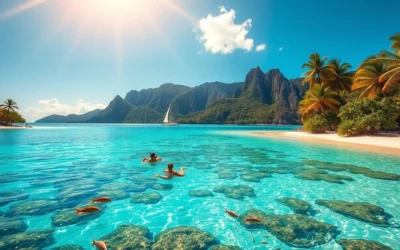✓ Accommodations✓ Flights✓ Rental Cars✓ Tours & Activities
Are you planning a trip to French Guiana and wondering when to go? You’re not alone. With its hot, oppressive, and mostly cloudy climate, timing your visit can make all the difference in your travel experience. The temperature in French Guiana typically varies from 72°F to 89°F throughout the year.
Based on the beach/pool score, the best time to visit for hot-weather activities is from mid-July to mid-October. Understanding the weather patterns and season will help you pack appropriately and plan your activities. Whether you’re interested in exploring the Amazon rainforest, observing wildlife, or enjoying coastal activities, this guide will provide you with essential insights to make the most of your travel to French Guiana.
Understanding French Guiana’s Climate
The climate in French Guiana is influenced significantly by its geographical location. Situated on the northern coast of South America, French Guiana is exposed to a tropical rainforest climate. This unique location near the equator contributes to the region’s relatively stable temperature throughout the year.
Geographical Location and Its Impact on Weather
French Guiana’s proximity to the equator and its coastal position on the Atlantic Ocean have a profound impact on its weather patterns. The warm waters of the Atlantic contribute to the high levels of humidity experienced throughout the year. Additionally, the region’s terrain, which includes rainforests and mountains, plays a role in shaping local weather conditions.

Year-Round Temperature Patterns
The temperature in French Guiana remains relatively consistent throughout the year. You can expect average highs to range from 83°F (28°C) to 89°F (32°C), while lows vary between 72°F (22°C) and 75°F (24°C). The variation in temperature between day and night is more significant than the variation between different months. September is typically the warmest month, with average highs around 89°F (32°C), while January and February are slightly cooler.
Understanding these temperature patterns is crucial for planning your trip. The consistent warmth means you can pack lightly, focusing on breathable clothing suitable for warm conditions. Moreover, being aware of the heat index, which can make temperatures feel hotter due to high humidity, will help you prepare for your visit.
The Two Distinct Seasons of French Guiana
Understanding the two distinct seasons in French Guiana is crucial for planning a trip that meets your expectations. French Guiana’s climate is characterized by a dry season and a rainy season, each with its unique characteristics.
Dry Season: August to December
The dry season in French Guiana, spanning from August to December, offers a relatively dry and sunny climate, making it an ideal time for outdoor activities such as hiking and exploring the rainforest. During this period, you can expect fewer rainy days, with the month of September typically being one of the driest. The dry season is perfect for visiting the coastal areas and enjoying water activities.
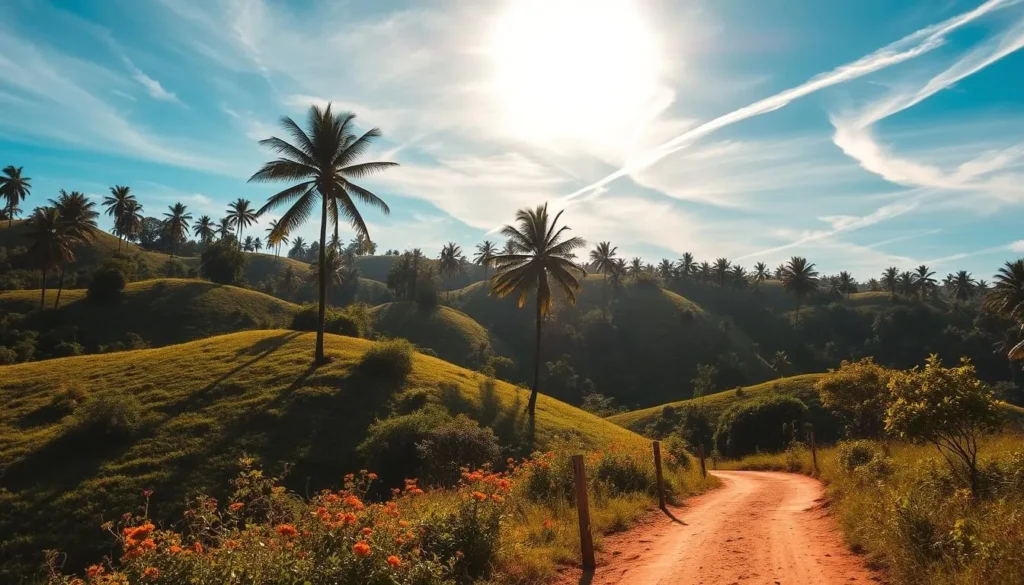
The dry season brings comfortable temperatures and lower humidity levels, making it easier to explore the region’s natural beauty. You can enjoy the lush vegetation and vibrant wildlife without the hindrance of frequent rain showers.
Rainy Season: January to July
The rainy season in French Guiana, which lasts from January to July, is characterized by frequent and intense downpours, often accompanied by thunderstorms. May is typically the wettest month, with an average rainfall of approximately 17.4 inches. Despite the rain, the landscape becomes lush and vibrant, with flowing waterfalls and rivers at their fullest.
- The rainy season brings the region to life, with lush vegetation and spectacular scenery for photography.
- June experiences the most wet days, with rain falling on an average of 27 out of 30 days.
- High humidity levels during the rainy season can make the heat feel more oppressive.
The rainy season offers a unique opportunity to experience the rainforest ecosystem at its most vibrant state. While it presents certain challenges, the region’s natural beauty is enhanced by the lush vegetation and flowing waterways.
Best Months for a Weather-Savvy Trip to French Guiana
To experience French Guiana at its best, it’s crucial to pick the optimal time for your travel. The country’s climate is characterized by two distinct seasons, and understanding these can greatly enhance your trip. The dry season, which spans from August to December, is particularly appealing for travelers seeking favorable weather conditions.
August to November: Prime Visiting Time
The period from August to November is considered prime time to visit French Guiana. During these months, the weather is generally dry and sunny, making it ideal for outdoor activities such as hiking and wildlife spotting. The dry conditions also make it easier to navigate the rainforest and coastal areas. Here’s a breakdown of what you can expect during this period:
| Month | Average Rainfall | Average Sunshine Hours |
|---|---|---|
| August | 2.2 inches | 7.5 hours |
| September | 1.4 inches | 8 hours |
| October | 2.0 inches | 7.8 hours |
| November | 2.5 inches | 7.2 hours |
September: The Optimal Month
September stands out as the single best month to visit French Guiana. With an average of only 1.4 inches of rainfall spread across approximately 7-8 days, it’s the driest month of the year. The clear skies provide excellent visibility for sightseeing and photography, allowing you to capture the country’s natural beauty in optimal light. Additionally, September boasts the highest sunshine levels, with an average of 6.4 kWh of solar energy reaching the ground daily, creating ideal conditions for outdoor activities.
You’ll experience slightly lower humidity levels in September, making physical activities more comfortable. The favorable weather conditions also coincide with good wildlife viewing opportunities, particularly for birds and reptiles. If your schedule allows flexibility, planning your trip to French Guiana during September will maximize your chances of experiencing the best weather conditions the country has to offer.
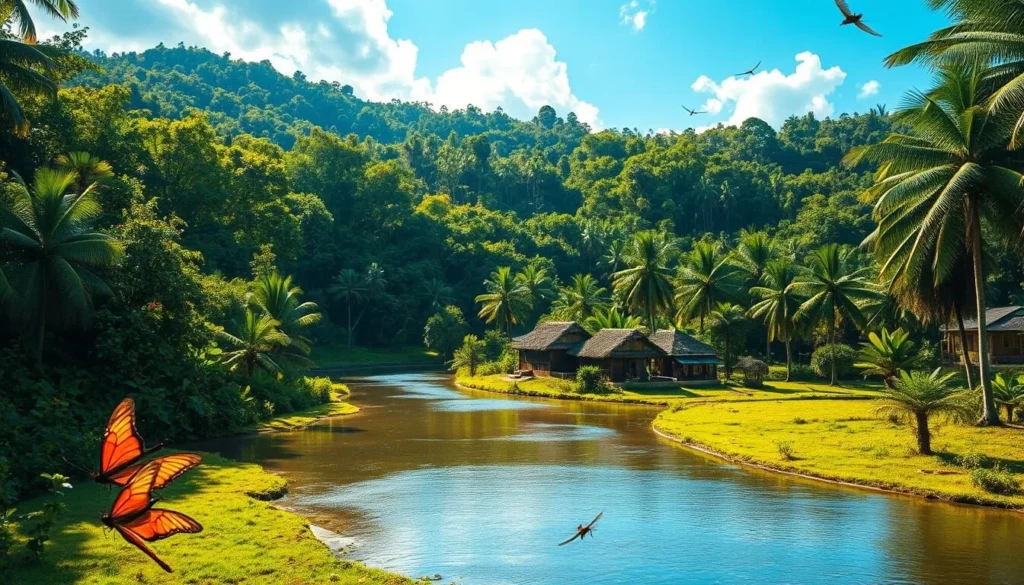
Weather Challenges During the Rainy Season
As you plan your trip to French Guiana, understanding the weather challenges during the rainy season is crucial. The rainy season, which spans from January to July, brings significant weather-related difficulties that can impact your travel plans and activities.
Transportation Difficulties
During the rainy season, transportation in French Guiana can become quite challenging. Roads may become slippery and prone to flooding, making travel by land difficult. River transportation, which is a vital part of the country’s transport network, can also be affected by strong currents and high water levels.
Some of the transportation difficulties you may encounter include:
- Flooded roads making certain areas inaccessible by land.
- River transport disruptions due to high water levels and strong currents.
- Increased risk of landslides and roadblocks.
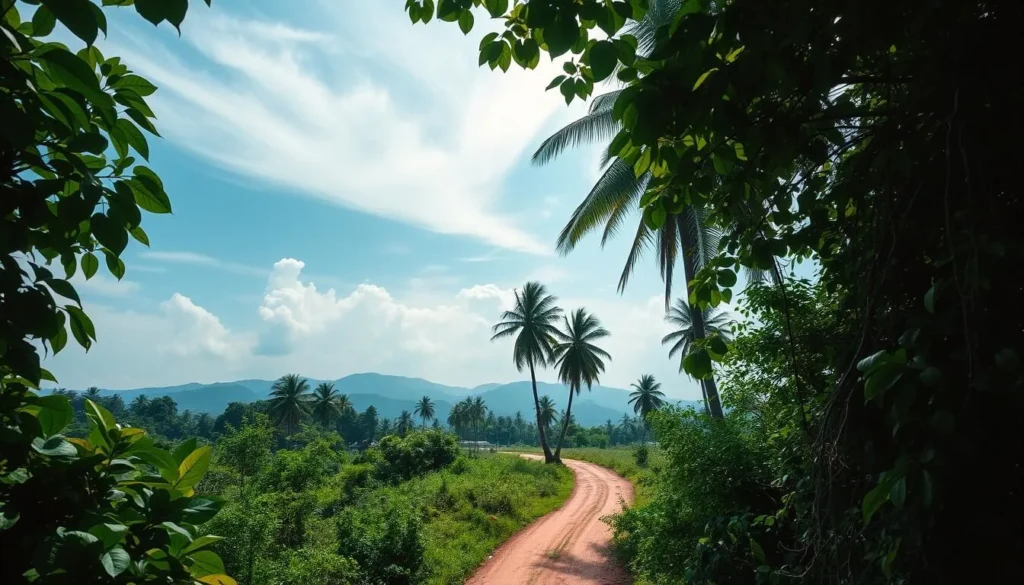
Impact on Outdoor Activities
The rainy season also has a significant impact on outdoor activities in French Guiana. While the rainforest is lush and vibrant during this time, the weather conditions can make certain activities more challenging.
Some of the challenges you may face include:
- Hiking trails becoming slippery and potentially dangerous.
- Wildlife viewing becoming more difficult due to changed animal behavior.
- Water-based activities facing challenges such as strong currents and rough seas.
- Photography opportunities being limited by reduced visibility and increased cloud cover.
To make the most of your trip, consider hiring an experienced guide who can help navigate these challenges and ensure a safe and enjoyable experience.
Regional Weather Variations Across French Guiana
French Guiana’s diverse geography leads to varied weather conditions across different regions. As you travel throughout this beautiful country, you’ll notice significant differences in climate and weather patterns.
Coastal Areas vs. Interior Rainforest
The coastal regions of French Guiana tend to have a more moderate climate compared to the interior rainforest areas. While coastal areas are generally warmer and more humid, the interior rainforest is characterized by higher levels of rainfall and a more pronounced dry season. The rainforest’s dense canopy and vast array of vegetation contribute to a unique microclimate that is distinct from the coastal regions.
When exploring the interior rainforest, be prepared for higher levels of rainfall and potential flooding during the wet season. In contrast, coastal areas are more susceptible to sea breezes, which can provide some relief from the heat.
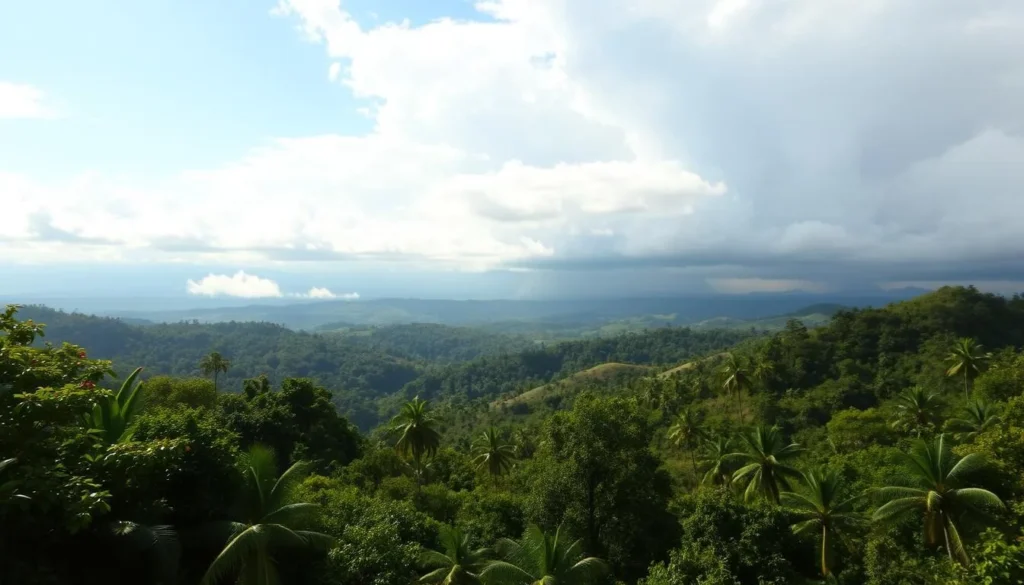
Elevation Differences and Their Effects
Elevation differences across French Guiana, although not extreme, contribute to noticeable variations in temperature and rainfall. The Tumuc-Humac Mountains, reaching elevations of approximately 800 meters, experience cooler temperatures and different rainfall patterns compared to the low-lying coastal areas.
For every 100 meters increase in elevation, temperatures decrease by approximately 0.6°C. This creates more comfortable conditions at higher elevations, especially during hot periods. However, higher elevations often experience more rainfall due to orographic lifting, where air masses are forced upward, cooling and releasing moisture as precipitation.
As you plan your trip to French Guiana, consider the regional weather variations to make the most of your visit. Whether you’re exploring the coastal areas or venturing into the interior rainforest, understanding the local climate conditions will enhance your experience.
Monthly Weather Breakdown
Understanding the monthly weather breakdown in French Guiana is crucial for planning a successful trip. This breakdown will help you navigate the varying climate conditions throughout the year, ensuring you’re prepared for whatever weather comes your way.
Temperature, Rainfall, and Humidity by Month
French Guiana’s temperature remains relatively stable throughout the year, with average temperatures ranging from 77°F to 86°F (25°C to 30°C). However, the rainfall and humidity vary significantly from month to month. The dry season, from August to December, sees less rainfall, while the rainy season, from January to July, experiences more frequent and intense rain showers. Humidity levels are generally high throughout the year, often above 80%.
| Month | Average Temperature (°F) | Average Rainfall (inches) | Average Humidity (%) |
|---|---|---|---|
| January | 82 | 12 | 85 |
| February | 83 | 10 | 84 |
| March | 84 | 11 | 85 |
| April | 84 | 13 | 86 |
| May | 84 | 12 | 85 |
| June | 83 | 10 | 84 |
| July | 82 | 8 | 83 |
| August | 82 | 6 | 82 |
| September | 83 | 4 | 81 |
| October | 84 | 3 | 80 |
| November | 84 | 4 | 81 |
| December | 83 | 7 | 83 |
Wind Patterns and Their Impact on Travel
The average hourly wind speed in French Guiana experiences mild seasonal variation over the course of the year. The windier part of the year lasts for 5.4 months, from December 5 to May 17, with average wind speeds of more than 6.1 miles per hour. February is the windiest month, with an average hourly wind speed of 7.3 miles per hour. In contrast, the calmer time of year lasts for 6.6 months, from May 17 to December 5, with July being the calmest month at 4.9 miles per hour.
The predominant wind direction is from the east throughout the year, bringing moisture-laden air from the Atlantic Ocean. This wind pattern significantly influences sailing and boating conditions along the coast. During the windier months, more experience is required for safe navigation. Conversely, the calmer wind period from May to December offers more stable conditions for drone photography, wildlife observation, and other activities sensitive to wind.
Understanding these wind patterns can help you plan activities that might be affected by wind conditions, such as coastal excursions or outdoor photography sessions. By being aware of the wind speeds and directions, you can make the most of your time in French Guiana and enjoy a more fulfilling travel experience.
Planning Activities Around Weather Conditions
Planning your activities around French Guiana’s weather ensures a safer and more enjoyable experience. The region’s diverse climate, ranging from tropical rainforest to coastal areas, requires careful consideration when scheduling outdoor activities.
Best Weather for Jungle Expeditions
The dry season, from August to November, is considered the best time for jungle expeditions in French Guiana. During this period, the rainfall is minimal, and the trails are generally more accessible. September and October are particularly favorable, with comfortable temperatures and lower humidity, making it ideal for trekking and exploring the rainforest.
The dry conditions also improve the chances of spotting wildlife, as animals tend to congregate around remaining water sources, making them easier to observe. However, it’s always wise to check local conditions before heading out, as unexpected rain showers can occur even during the dry season.
Optimal Conditions for Coastal Activities
For coastal activities such as swimming, snorkeling, and diving, the dry season also offers the best conditions. The calmer seas and clearer waters from August to November provide optimal visibility and safer conditions for water activities. September and October are again highlighted as the most reliable months, with clear skies and lower humidity enhancing the overall experience.
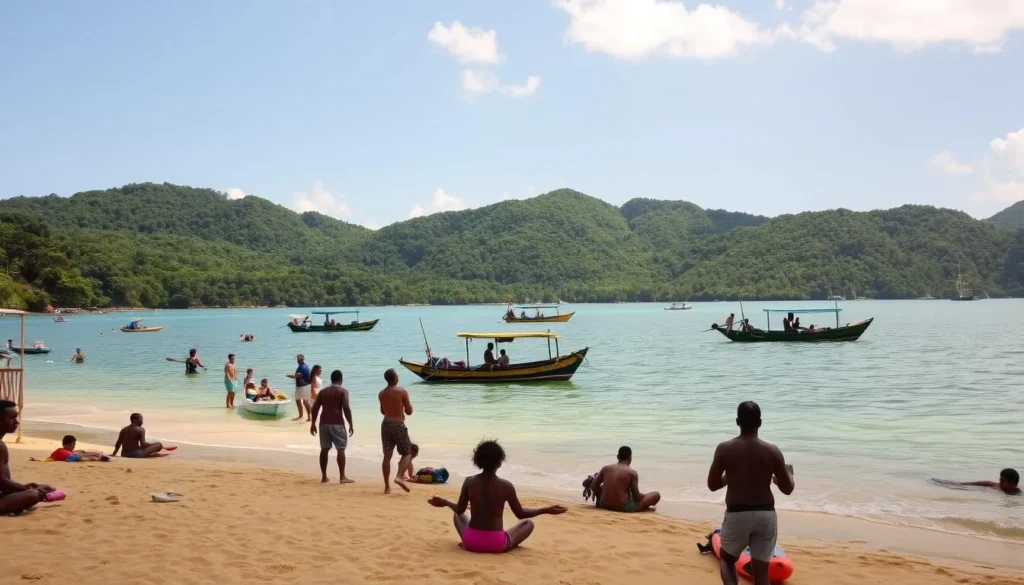
It’s crucial to be aware of the potential hazards, including strong currents and riptides, especially during the rainy season when river outflows are stronger. Always check local advisories and follow the advice of local authorities to ensure a safe and enjoyable experience.
Wildlife Viewing and Weather Considerations
To maximize your wildlife viewing experience in French Guiana, it’s essential to consider the weather conditions. The country’s diverse wildlife is active throughout the year, but certain weather patterns can significantly impact their visibility and activity.

Turtle Watching Season: April to September
During the period from April to September, French Guiana becomes a haven for turtle watching. The dry season, which starts in August, is particularly conducive for spotting various species. Turtle watching peaks during these months as the weather conditions favor both the turtles and the observers. The dry and relatively calm weather makes it easier to access the coastal areas where turtles nest.
The early morning hours are ideal for turtle watching, as the cooler temperatures make the turtles more active. As the dry season progresses, the reduced rainfall improves the overall conditions for observing these magnificent creatures in their natural habitat.
Best Conditions for Spotting Rainforest Wildlife
The transition periods between the dry and rainy seasons often provide the best overall wildlife viewing opportunities in French Guiana’s rainforests. Late July to early August and late November to early December are particularly good times. During the dry season, from August to November, mammals and reptiles congregate around shrinking rivers and pools, making them easier to spot.
Bird watching is excellent year-round, but it peaks during the dry season when visibility is better and many species are more active. The early morning hours, between 5:30 and 8:30 AM, remain the best time for wildlife viewing regardless of the season, as many animals are most active during this cooler part of the day.
Cultural Events and Weather Timing
You can experience the rich cultural heritage of French Guiana through its various festivals and celebrations, which are often weather-dependent. The country’s unique cultural identity is shaped by its diverse traditions and the tropical climate.
Carnival Season: February and March
The carnival season in French Guiana takes place during February and March, coinciding with the rainy season. This period is characterized by vibrant parades, music, and dancing in the streets. Although the rain may intensify during these months, the carnival events are typically held indoors or in covered areas, ensuring that the festivities continue uninterrupted.
Key Events:
- Vibrant parades and street performances
- Traditional music and dance
- Cultural celebrations with local communities
Other Weather-Dependent Celebrations
Beyond the carnival, French Guiana hosts various cultural events throughout the year, many of which are influenced by the weather. For instance, the Cayenne Festival of Music in June benefits from the transition out of the rainy season, while the Hmong New Year celebrations in November/December take advantage of the dry season’s favorable weather.
| Event | Month | Weather Condition |
|---|---|---|
| Cayenne Festival of Music | June | End of rainy season |
| Hmong New Year | Nov/Dec | Dry season |
| Bastille Day | July | Beginning of dry weather |
Packing Essentials for Different Weather Conditions
To make the most of your trip to French Guiana, packing the right gear is essential. The country’s climate varies significantly between the dry and rainy seasons, each requiring specific preparations.
Dry Season Necessities
During the dry season, from August to December, you can expect plenty of sunshine and relatively dry conditions. It’s the perfect time for outdoor activities like hiking and exploring the rainforest.
Lightweight, breathable clothing is a must, along with a good sun hat, sunglasses, and high SPF sunscreen to protect against the strong tropical sun. Comfortable walking shoes or hiking boots are also essential for jungle treks and other adventures.
| Item | Description | Benefit |
|---|---|---|
| Lightweight Clothing | Breathable fabrics | Keeps you cool |
| Sun Hat | Wide-brimmed hat | Protects face and neck |
| Sunscreen | High SPF | Prevents sunburn |
Rainy Season Must-Haves
The rainy season, spanning from January to July, brings intense downpours and high humidity. To navigate these conditions, you’ll need a few key items.
A breathable rain jacket or poncho is crucial, as are quick-drying clothing and waterproof footwear. Don’t forget insect repellent containing DEET or Picaridin to protect against mosquitoes, and consider packing anti-fungal powder to prevent infections.
Conclusion: Making the Most of Your Weather-Savvy Trip
Planning a trip to French Guiana requires a deep dive into its climatic conditions to make the most of your visit. The best time to visit includes the dry season, from August to December, when it’s warm and sunny, making it ideal for beachcombing, sightseeing, and trekking.
To make the most of your trip, it’s essential to balance optimal weather conditions with your specific interests and priorities. The dry season offers the most reliable weather, with September standing out as the single best month for most travelers. However, if you’re interested in specific wildlife viewing or cultural experiences, you may need to visit during less optimal periods.
Being flexible with your itinerary allows you to adapt to actual conditions during your visit, taking advantage of good weather windows for weather-sensitive activities. Consulting with local tour operators or guides before finalizing your plans can provide valuable insights based on current conditions and recent trends.
By applying the information in this guide to your trip planning process, you’ll be well-positioned to experience the best that French Guiana has to offer, regardless of when you visit. French Guiana rewards weather-savvy travelers with extraordinary experiences in one of South America’s most unique and biodiverse regions.
—
The above is subject to change.
Check back often to TRAVEL.COM for the latest travel tips and deals.
